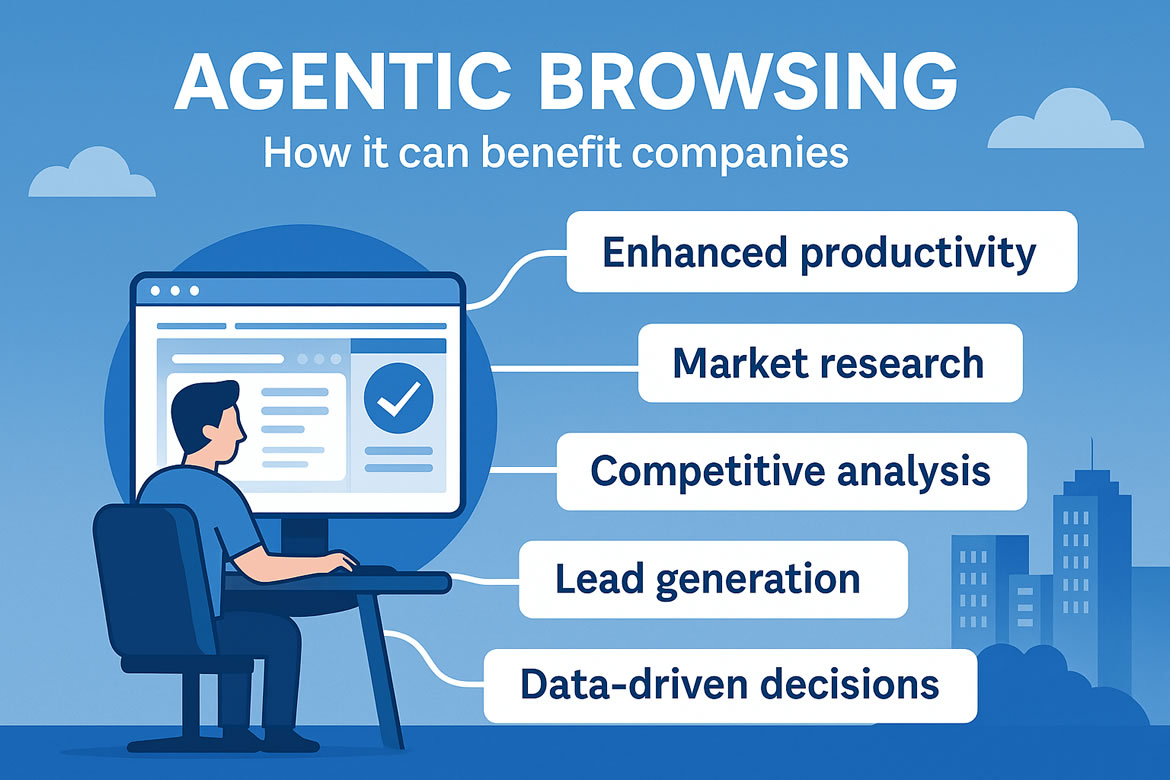In today's fast-paced digital landscape, companies continuously seek innovative ways to optimize operations, improve efficiency, and reduce costs. One of the emerging technologies making significant strides in enhancing automation capabilities is agentic browsing. Understanding how agentic browsing works and its impact on process automation is crucial for maintaining competitive advantage and driving digital transformation.
What is Agentic Browsing?
Agentic browsing refers to the capability of intelligent software agents—powered by advanced artificial intelligence and natural language processing—to autonomously navigate and interact with web environments to perform complex tasks. Unlike traditional web scraping or robotic process automation (RPA) that rely on static workflows, agentic browsing leverages contextual understanding, decision-making abilities, and dynamic web interaction similar to human users.
How Agentic Browsing Works
At its core, agentic browsing involves AI agents that can:
- Understand natural language instructions or structured commands.
- Explore websites, identify relevant information, and interact with web elements such as forms, buttons, and menus.
- Adapt to changes in web interfaces dynamically without needing manual reprogramming.
- Make decisions based on real-time data, learn from feedback, and optimize task execution.
These agents combine techniques from machine learning, reinforcement learning, and computer vision to provide a more flexible, intelligent browsing experience than traditional automation tools.
Applications of Agentic Browsing in Automating Business Processes
Agentic browsing opens new horizons for automation across various domains:
1. Data Gathering and Market Intelligence
Companies constantly monitor competitors, market trends, and customer feedback. Agentic browsing allows automatic, continuous extraction of relevant data from multiple, diverse sources such as social media, product review sites, and competitor web portals. For example, an AI agent could autonomously collect pricing data from competitor websites nightly and alert companies to any significant fluctuations.
2. Client Onboarding and Customer Support
Onboarding new customers often involves multiple online steps including form completion, verification, and account setup. Agentic browsing can automate these workflows by navigating portals, submitting applications, or even communicating via chatbots on external sites to verify information – significantly reducing manual effort and turnaround times.
3. Supply Chain and Vendor Management
By autonomously tracking procurement platforms, shipment tracking websites, and vendor portals, agentic browsing can provide timely updates, manage purchase orders, and flag disruptions proactively. For instance, it can detect delays in shipment tracking systems and notify supply chain managers to arrange alternatives, avoiding costly downtime.
4. Regulatory Compliance and Risk Management
Regulatory environments frequently change, requiring businesses to stay updated on legal provisions and compliance notices. Agentic browsing agents can continuously monitor regulatory websites and gather mandatory updates or filings, ensuring compliance teams maintain current knowledge without exhaustive manual research.
Case Study: Enhancing Lead Generation Through Agentic Browsing
A technology firm recently implemented agentic browsing to automate lead generation by scanning multiple business directories, social media, and news sites to identify potential customers matching their ideal profile. The AI agent autonomously collected contact information, qualifying data, and purchase intent signals. This approach led to a 30% increase in qualified leads within the first quarter, while reducing manual research hours by over 60%.
Benefits
- Increased Efficiency: Automated, intelligent interaction with web resources reduces time spent on repetitive data entry and monitoring tasks.
- Scalability: Agentic browsing systems can simultaneously handle multiple workflows across various digital platforms.
- Adaptability: Unlike rigid RPA bots, these agents adjust intelligently to UI changes without frequent reprogramming.
- Cost Reduction: Lower dependency on human resources for manual online tasks reduces operational costs.
- Better Decision-Making: Real-time, automated data extraction enhances insights and responsiveness to market or operational changes.
Implementation Considerations
- Integration: Ensuring agents can be integrated with existing IT infrastructure and enterprise applications.
- Security: Protecting sensitive data handled during browsing activities and managing permissions carefully.
- Compliance: Verifying that automated browsing adheres to website terms of service and data privacy laws.
- Customization: Tailoring agents’ behavior to specific business rules and objectives to maximize ROI.
The Road Ahead
As AI continues to evolve, agentic browsing will increasingly enable businesses to delegate complex, web-based tasks, transforming how companies leverage online data and services. Forward-thinking organizations that invest in this technology stand to benefit from enhanced agility, improved operational efficiency, and superior market responsiveness.
A practical next step is to pilot agentic browsing in targeted functions such as market intelligence or customer onboarding to quantify benefits before scaling across the enterprise.
Conclusion
Agentic browsing represents a new frontier in process automation combining AI’s autonomy with the vast information ecosystem of the web. By automating intelligent navigation and interaction with digital environments, companies can streamline operations, uncover valuable insights, and allocate human talent to higher-value strategic activities. Executives who understand and harness the power of agentic browsing will be well-positioned to lead digital transformation initiatives that deliver measurable business value.
Recommended Resources:
- “AI and Automation in Digital Business,” Gartner Research
- Case studies on AI-based process automation — McKinsey & Company
- Compliance and ethical guidelines for AI browsing agents — IEEE Standards Association
Implementing agentic browsing can be a game-changer; explore vendor solutions or develop in-house capabilities aligned with your company’s automation roadmap to unlock this potential.







